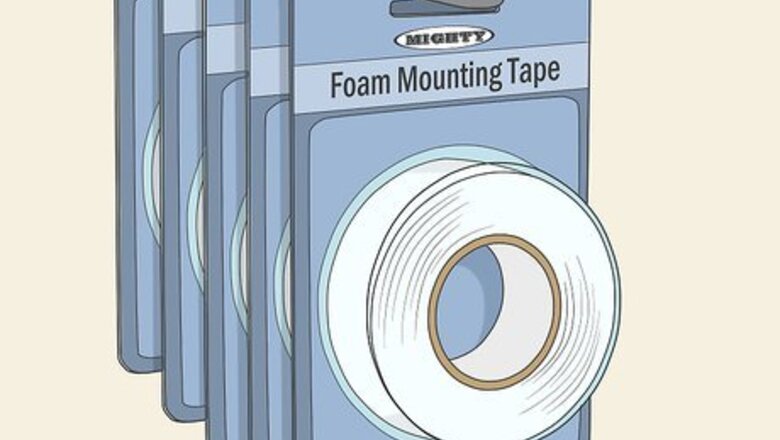
views
Using Mounting Tape
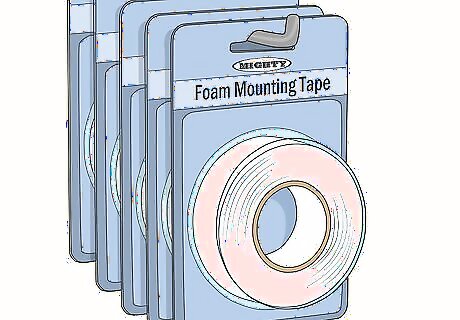
Purchase foam mounting tape or wall adhesives from a hardware store. Look for a roll of foam tape that has adhesive on both sides, or pick out adhesives such as Command strips that will attach easily to your cork board and wall. Purchase enough of the tape or adhesive to hold the weight of the cork board. Check the packaging of your adhesive to find out the amount of weight it can hold up on the wall. This hanging method works well for concrete, brick, cubicles, and drywall.
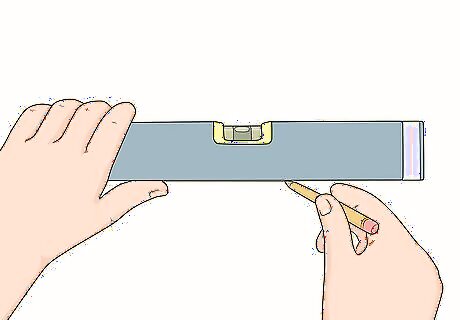
Use a level and pencil to mark where you'll hang the board. Decide where you want your cork board to go and mark it with a piece of painter's tape or a pencil. Hold a level up to the wall and draw a faint, straight line with your pencil so you know exactly where to place the cork board and adhesive. If you're concerned about the adhesive sticking to your wall, place strips of painter's tape along the area where you'll hang the board for the adhesive to attach to. This works especially well for brick walls.
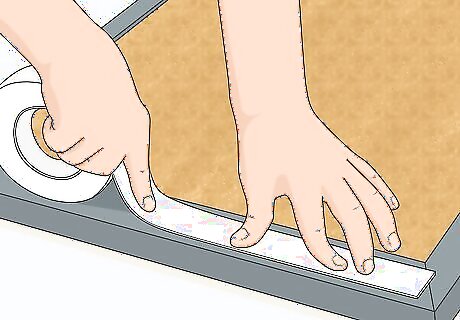
Place the adhesive on the back of the cork board. If you're using foam tape, cut the tape into sections—they can be as long or short as you'd like, but 3–4 in (7.6–10.2 cm) strips work well. Remove the paper from one side of the tape or adhesive, and place it on the back of the cork board. Place tape near each corner of the cork board to make sure it's stable. Put equal amounts of adhesive or tape on each section of the cork board to help with even hanging and weight distribution.
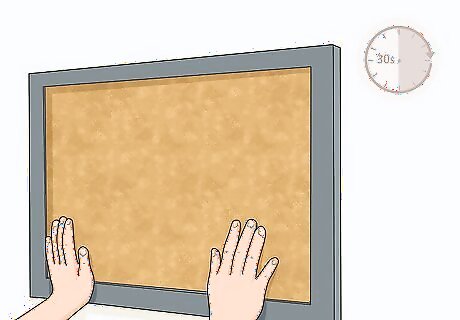
Situate the cork board on the wall and hold it for 30 seconds. Remove the paper covering each strip of mounting tape. Pick up the cork board and align it with the line you drew in pencil. Press the cork board against the wall and hold it there for 30 seconds, giving the adhesive time to work and become stable. Once the cork board is firmly attached to the wall, it's ready to be used!
Installing a Framed Cork Board using Brackets

Use a level to mark where the cork board will hang on the wall. Place the level on the wall and use it to create a straight horizontal line where the top of the cork board will go. Use a pencil to mark this straight line so you’ll know where to line up your cork board when you hang it. If you don’t have a level, use a ruler to create a straight line by marking equal vertical measurements along the wall.
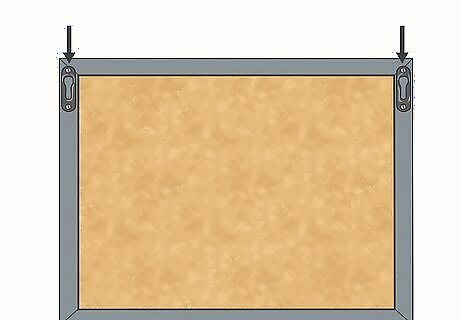
Install the picture hanger brackets on the cork board’s frame. These smaller brackets will attach to the brackets on the wall. Use a screw or nail, depending on your type of bracket, to attach the bracket to the top two corners of the back of the cork board. These brackets should have a loop on the top, making it easy to hang them on the bracket that will be attached to the wall. If your cork board already comes with brackets attached, or holes designed to hang on to the brackets on the wall, skip this step.
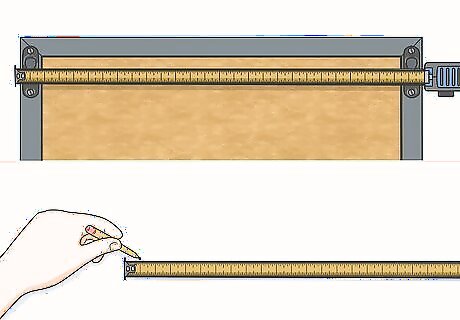
Mark where the brackets will hang on the wall with a pencil. Measure how far apart the brackets are on the cork board’s frame. Take this measurement and line it up along the line you drew on the wall where the cork board will hang. Use a pencil to mark dots where the brackets will be installed on the wall. Write down the measurement to be sure you don’t forget it.
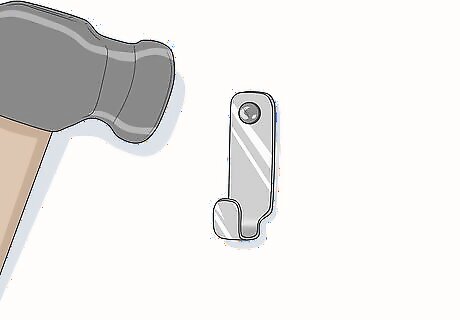
Nail the picture hanger wall brackets into the wall using a hammer. The wall brackets are the brackets that will hold the hooped brackets in place. Slide the wall bracket onto the nail so the bracket is flat against the wall with the nail tip positioned on the marked dot. Gently nail the bracket into the wall using a hammer so the bracket is secure and can't move. Repeat this step for the other wall bracket that will hold the other side of the cork board up.
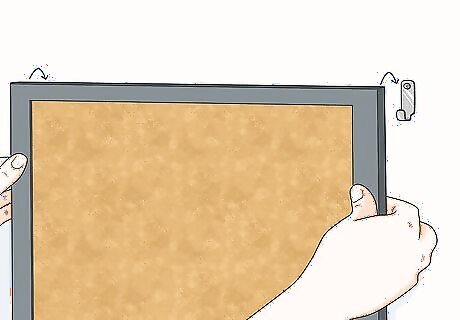
Hang the cork board on the wall by lining up each set of brackets. Hook the brackets that are on the back of the cork board onto the brackets on the wall using the loops. Once they’re both hooked, stand back and admire your new hanging cork board!
Covering a Wall with Rolled Cork Board
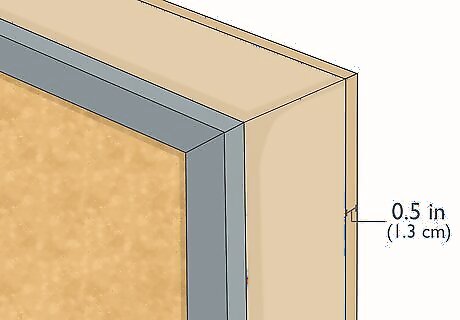
Attach the cork board to a piece of plywood to protect your wall. If you’re not planning on ever removing the cork board, feel free to attach it directly to the wall. Otherwise, it’s best to purchase a piece of plywood backing in your desired size so you can attach the cork board to this before hanging the plywood on the wall. That way, you’ll protect your walls and create fewer drill holes. Choose a piece of cork board at least 0.5 in (1.3 cm) thick if you’re not going to use plywood. This will keep pushpin marks from damaging the wall.
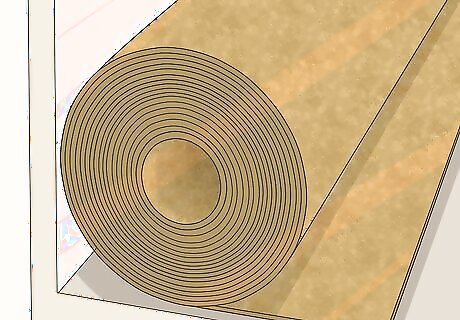
Select a piece of cork board that fits your desired dimensions. Purchase cork from a local retail store or order the cork board from an online company to get your perfect size. This cork board will come in a roll, making it easier to transport. Decide on the size and thickness that you'd like before purchasing the cork. Measure the wall or piece of wood beforehand so you know what size cork board you need. Craft stores or office supply stores may sell rolls of cork board. To find places that sell cork board online, type “purchase roll of cork board” into an online search engine.
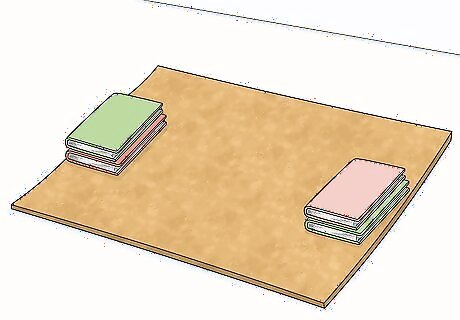
Unroll the cork board a day before you plan to hang it so it flattens. Stretch the piece of cork board out on an even, clean surface. Place heavy objects along the edges, like books, so the piece of cork board starts to lay flat. Place paper weights or cans of food along the edges of cork board. Make sure the items you place on the edges are clean so they don’t leave marks on the cork board once they’re removed.
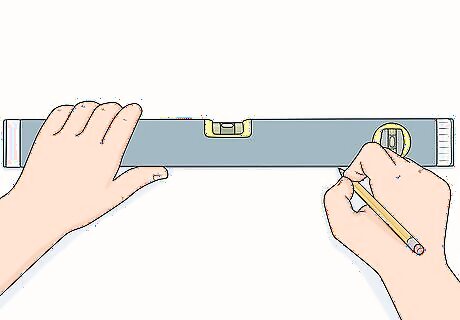
Use a level to mark where the cork board will go. Hold a level up to the wall and use a pencil to draw a straight line where the top of your cork board (and plywood, if applicable) will hang. This ensures your cork board will be even once it's properly installed. If you don't want to mark your wall with a pencil, use a strip of painter's tape to mark the straight line instead.
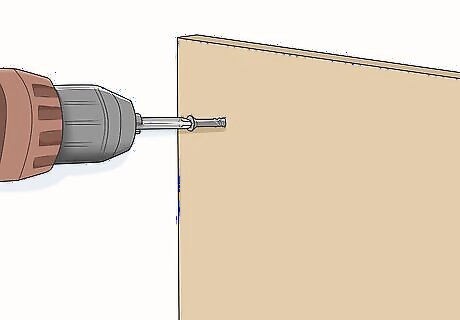
Attach the piece of plywood to the wall, if you're using one. Screw the plywood directly into the wall using a drill, or mount furring strips to the wall first. If you’re using furring strips, place these in parallel horizontal lines along the wall using screws and attach the plywood to the strips using nails or screws as well. Attach the screws to the wall around the border of the plywood, roughly every 1 ft (0.30 m). Furring strips are pieces of wood that act as a buffer between the plywood and the wall so you don’t have to place so many nails or screws into the wall. Try to attach the plywood to studs whenever possible. Locate the studs in your wall using a stud finder.
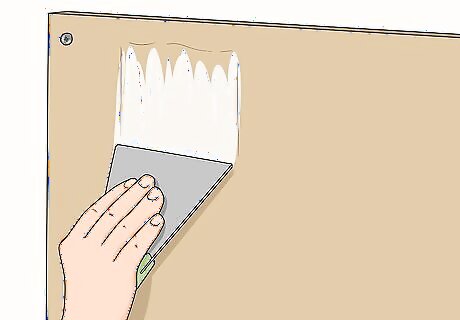
Apply a strong adhesive glue to the wood or wall. Spread the adhesive on the plywood using a trowel or spatula. Cover the plywood in an even layer, creating texture with a trowel to make it easier for the cork to adhere to the plywood. Look for a strong adhesive at your local hardware store that works with cork, such as industrial strength or permanent types of glue. Be ready to immediately put up the cork board once you’ve applied the adhesive.
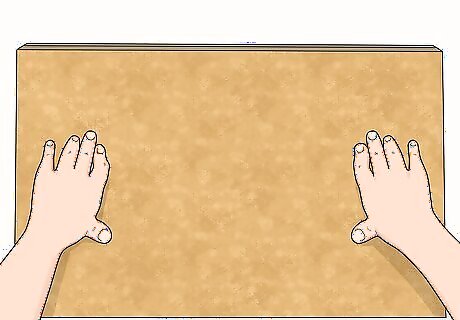
Line the edges of the cork board with the edges of the wall or wood. Pick up the piece of cork board and line the top edges of the cork board with the top edges of the plywood or wall. Place the cork board on the wood or wall slowly to ensure it’s even, pressing down on the cork board to help it stick. Have a friend help you do this to make the process easier.
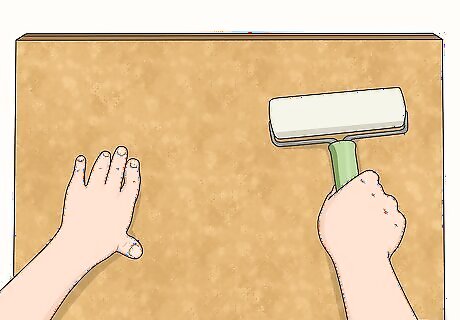
Use a rolling pin to help adhere the cork board to the wall evenly. Once the cork board is lined up on top of the wood or wall, use a rolling pin from the kitchen to flatten the cork board against the surface. Keep rolling the cork board for several minutes, applying a slight pressure to help the cork board stick to the wood or wall. Don’t worry if the cork board doesn’t immediately flatten against the wall. As you continue rolling it with a rolling pin, it will start to stick to the wall.












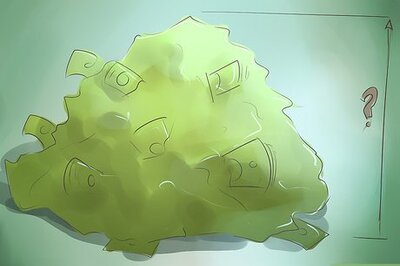



Comments
0 comment